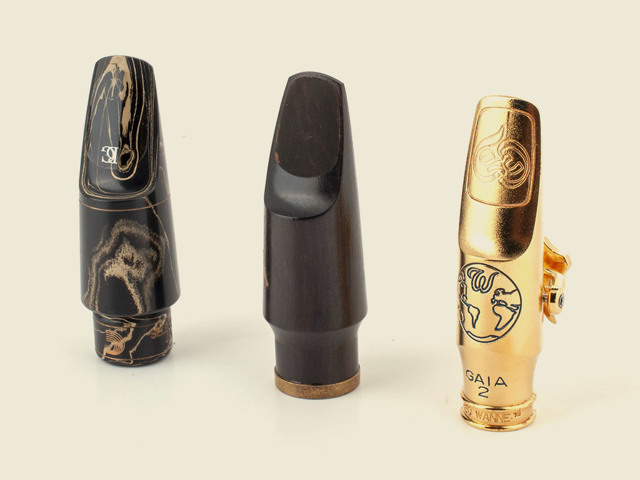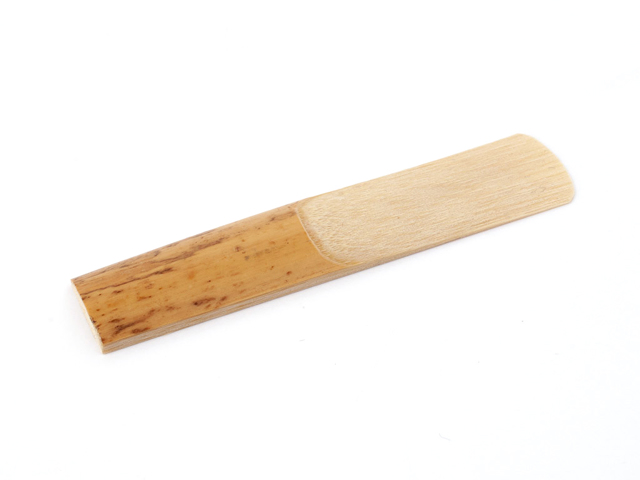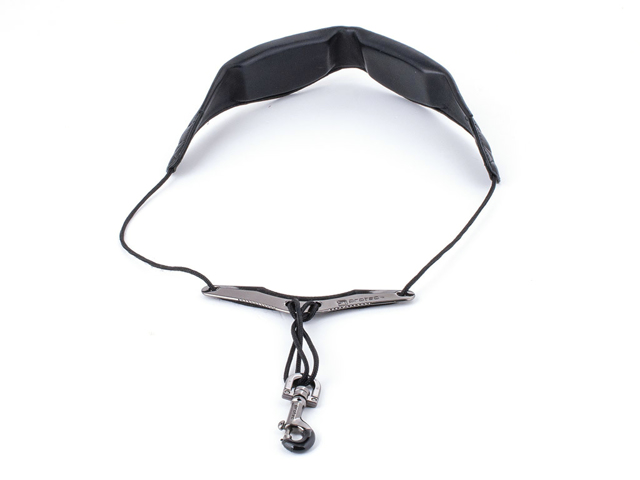Saxophone accessories
So, you have chosen to play the saxophone and maybe you already have an instrument in mind or at home. To complete the sound of your instrument, you need reeds, a mouthpiece, and a ligature, among other things. The search for the ultimate sound starts here!
All saxophone mouthpieces work the same way. A reed vibrates against the mouthpiece, producing sound through these vibrations. Saxophone mouthpieces are made of ebonite, plastic, or metal. The biggest difference between different mouthpieces is the tip opening along with the facing; also called open or closed opening. In our article on woodwind mouthpieces, we explain how the sound is influenced by the mouthpiece.

All saxophone mouthpieces work the same way. A reed vibrates against the mouthpiece, producing sound through these vibrations. Saxophone mouthpieces are made of ebonite, plastic, or metal. The biggest difference between different mouthpieces is the tip opening along with the facing; also called open or closed opening. In our article on woodwind mouthpieces, we explain how the sound is influenced by the mouthpiece.
Adams recommends that a beginner look at the ebonite Selmer C* Series 80 mouthpiece. The average tip opening is ideal for starting. Don’t forget mouthpiece patches to protect your teeth and mouthpiece!
Reeds
Besides the saxophone and the mouthpiece, the reed also influences the sound and the ease of playing. Within a brand and type of reed, there are different strengths. This strength indicates how flexible a reed is. A flexible reed is often brighter, while a stiffer reed sounds warmer. As an advanced player, it is important to find the reed that suits you best. It is about you, your instrument, your mouthpiece, and your reed creating your sound together.
Adams recommends the Vandoren Traditional strength 2 or 2.5 for the starting player. This reed offers a lot of sound, a lot of freedom between music styles, and is easy to blow.
We have more information about reeds on our website. You can read more about:
- How reeds are constructed.
- How to take care of your reeds.
- How to break in a reed.
- How to work on a reed.
- How to solve problems with your reed.
- And what tools you need for that.

Ligature and mouthpiece cap
Ligatures or reed clamps are used to attach the reed to the mouthpiece. The reed must be able to vibrate to produce a beautiful sound but should not come loose during playing. Ligatures are often sold together with a mouthpiece cap. These caps are designed to protect the mouthpiece and reed during a rehearsal. We recommend the BG standard ligatures for a beginning player.
Case or gig bag
A case is important when you want to protect your instrument well. Especially if you have an older instrument whose case no longer meets your needs, or if you have a case that doesn't fit your music stand and sheet music. Cases can be divided into two categories: hard cases and gig bags. A hard case has a wooden or fiberglass shell and has cushions inside to protect the instrument. These cases are often heavier. A gig bag is lighter but does not have a hard exterior; gig bags usually use thick foam to protect the instrument. There are also form-fitted cases. These have the same shape as the saxophone and usually have little to no space for accessories. A double case can hold multiple saxophones. The most common double case is one for alto and soprano.
Adams recommends:
- Marcus Bonna hard cases
- Protec gig bags

Stand
When you need to write something on your sheet music frequently or switch instruments, it's important to be able to safely set your instrument aside. Instrument stands are made for this purpose. There is a suitable stand for every saxophone.
Straps
Straps help keep the instrument stable while playing and distribute the weight of the saxophone better so that your fingers can respond better and faster. Make sure to check if there is a strap suitable for your body type and the way you want to distribute the weight. A harness will shift the weight to the middle of the back and shoulders, while a strap mainly puts pressure on the back of the neck and shoulders.
Check out all our saxophone straps here.

Maintenance
Of course, you want your saxophone to stay in good condition. Read on our saxophone maintenance page what you can do yourself to keep your instrument in good condition. Below are our recommendations regarding oil, grease, and swabs for saxophones.
Octave protection
An octave protector is essentially a cap that you place in the body when you remove the neck of the saxophone. This cap ensures that the connection between the neck and the body remains round and thus continues to fit.
Swabs / wipers
To keep your instrument dry and clean, swabs are indispensable. Usually, new saxophones come with a cloth. However, a swab to dry the inside is often missing. Below you will find pull-through swabs that you pull through the instrument to dry it, as well as brush swabs that absorb more moisture at once.
Oil and grease
To keep your saxophone running smoothly, it needs to be lubricated occasionally. Especially the rods and the cork will need this more often. For the cork at the end of the neck, cork grease is available, usually coming in a small pot or a lip balm-like tube. For the rods, key oil is most suitable. These are often provided with a long needle to precisely oil everything. On our maintenance page, you can read more about how often you need oil and grease and how to use these products.